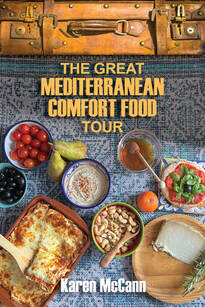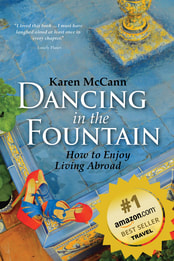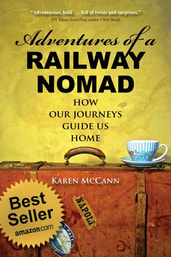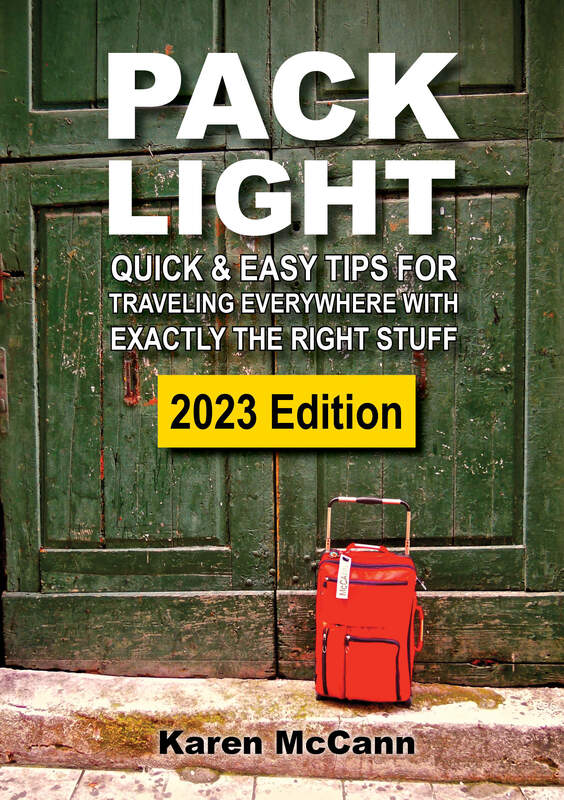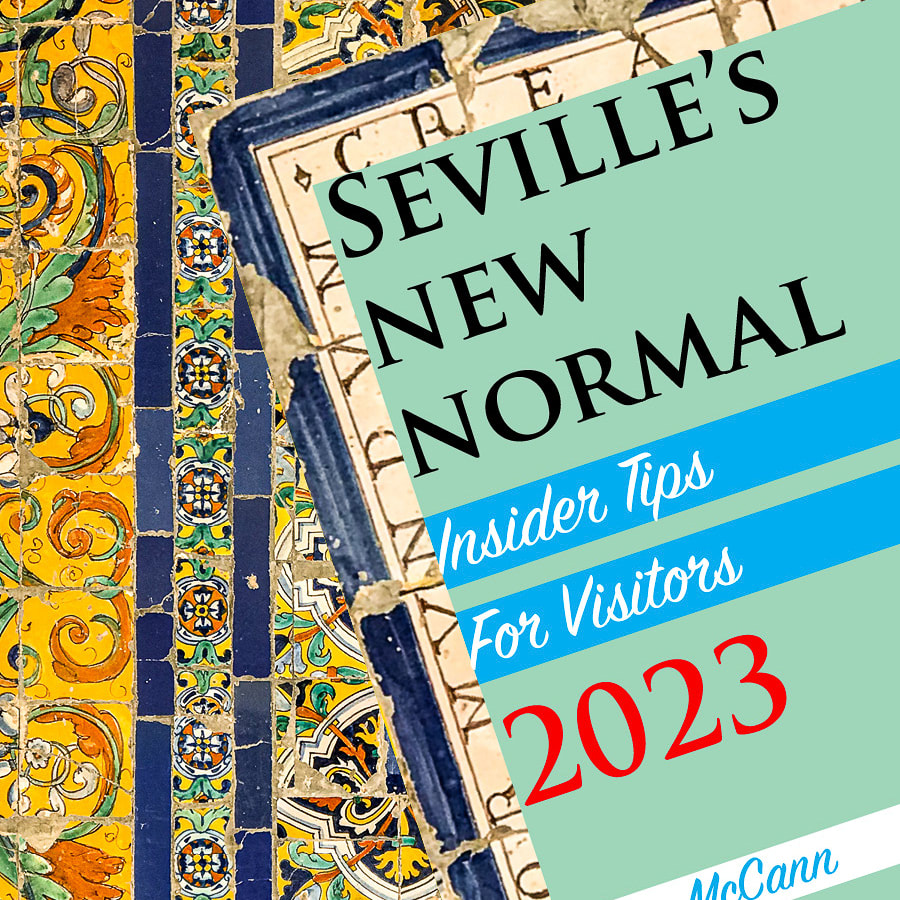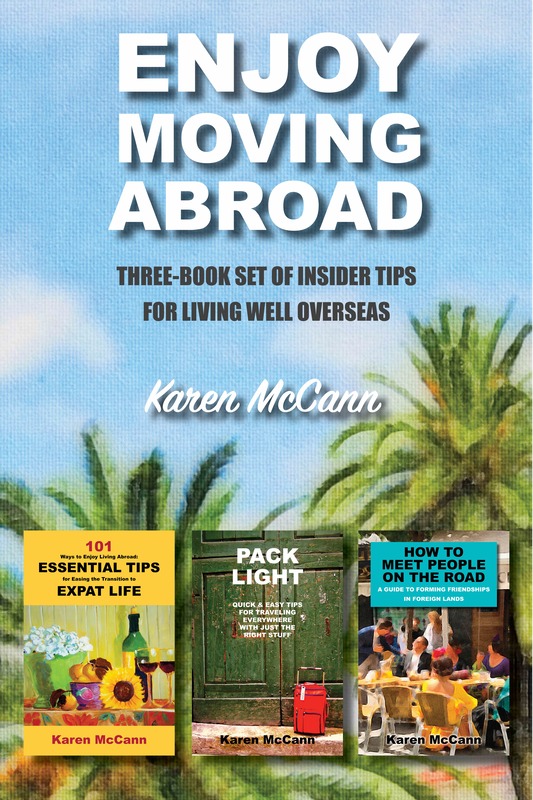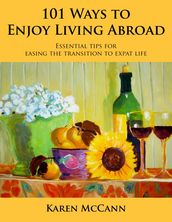 Almost exactly a year ago, I received word that both the paperback and e-book versions of my book Dancing in the Fountain would soon be posted on Amazon – which nowadays marks the official debut of your book. Finger poised to click “send” on my breathless email announcement, I waited. The paperback soon appeared, but there was no sign of the Kindle edition. A week later, I was still waiting, and I beginning to get concerned – and perhaps just a teeny tiny bit cranky – about the delay. Meanwhile, life – as is so often the case – continued on, with Rich leaving for a family gathering in New Jersey, and the downstairs lavatory malfunctioning in an unspeakably foul and dramatic manner. As I paid the plumber $300 for the 15 minutes he’d spent clearing out the pipes, I remember thinking, “If only my publishing problems could be resolved as quickly and easily as my plumbing problems.” 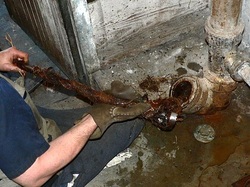 How prophetic I was! The following day, the lavatory staged an even more ghastly eruption, and for the next week my time was divided between calling the formatting/distribution house that had apparently routed my Kindle edition to a black hole, and dealing with the plumber, who kept upping the cost estimates at dizzying speed. He showed me blurry videos of our pipes’ interior, which looked remarkably like images from my last colonoscopy. I could just about make out some fuzzy gray blobs, but whether they were tree roots, polyps, or planetary nebulae I couldn’t tell you. “I’ll email you copies,” said the plumber helpfully. Really? What did he think I was going to do? Post them on Facebook? In the meantime, friends who saw that the paperback edition of Dancing in the Fountain had appeared on Amazon emailed their congratulations. “This must be one of the happiest weeks of your life,” they wrote. Not so much as you’d think. 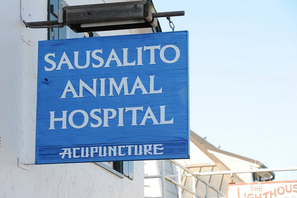 Not the same facility Rich used. Photo by G Paumier Not the same facility Rich used. Photo by G Paumier Eventually, of course, the Kindle edition of my book did surface, and the plumbers finished clearing the blockages in our pipes and departed. Our sewage, and our lives, flowed on. This summer, hiccups and obstructions have once again disrupted our plans, causing an all-too-familiar feeling of frustration we're calling “delay-jà-vu.” As I mentioned in my post Plan B, our long-anticipated train trip through Central and Eastern Europe, originally scheduled to start June 1, was delayed for a family wedding and then put off again so Rich could deal with a pesky pain in his leg. He’s much better now, thanks to acupuncture and an esoteric form of muscle-manipulating chiropractic treatments. This being California, the real surprise was that no one suggested shamanic drumming and/or medical marijuana, although my yoga teacher felt a wheat-free diet might have done the trick sooner.  In theory, by the time you read this, we’ll be in the air en route from California to London to Seville. A few days after that, we should be on a train to Barcelona, then taking a ferry to Genoa to begin our wanderings. By now, however, I’ve learned my lesson about plans and schedules. I don’t know what’s going to happen – a rail strike, worldwide monetary collapse, or simply an asteroid striking the earth and sending us hurtling toward the sun – but I can tell you one thing for sure: I’m still expecting delays.
18 Comments
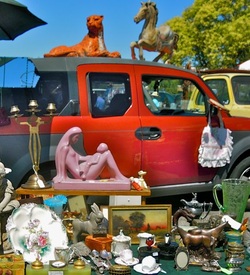 “There are good days, and there are bad days, and this is one of them,” Lawrence Welk once remarked, and I’ve found that kind of ambiguity reflects the essence of expat life. Traveling back and forth between two countries twice a year, crossing an ocean and nine time zones in each direction, words like “normal and “home” shift their meanings so abruptly I sometimes suffer from culture lag. When I find myself feeling like a stranger in my own country, I know there’s a simple, sure-fire remedy that will help me re-connect with what it truly means to be an American. I go to a flea market. I love flea markets and all their various cousins: swap meets, rummage sales, garage sales, yard sales, estate sales, antiques markets, and white elephant sales. If you’ve never been to one, picture a giant, open-air, pop-culture museum where you’re allowed – encouraged, even – to play with all the displays. Sellers will explain the history, cultural significance, and use of each item; often your fellow shoppers will chime in with, “White go go boots! I wore a pair to the Beatles concert in 1964.” The people watching is some of the finest in the nation; the tattoos alone are worth the visit. 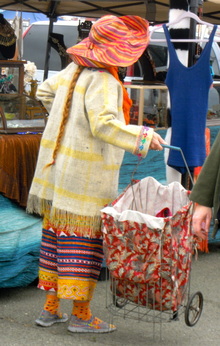 And then there are the bargains. In 1959, my mother was working at the parochial school rummage sale when a woman she knew paid $3 for a face powder compact, and the shiny decorations on the lid turned out to be real diamonds. Let me hasten to add, that’s never happened to me. But I have bought great stuff that seemed ludicrously undervalued, such as a carved mahogany cabinet for $28. If you fall in love with something, chances are you'll be able to dicker over the price until it becomes affordable. (Try doing that at the Metropolitan Museum of Art!) This summer, it suddenly struck me that when international visitors arrive, eager to experience “the real America,” this is where I should be taking them. Oh sure, they can also go to New York, Las Vegas, and the Grand Canyon if they must. But for a close-up, hands-on, take-home-a-piece-of-it experience, I’m recommending a day at a flea market. So as a public service for any of my readers who may be visiting America this summer, here’s my short course in flea markets. 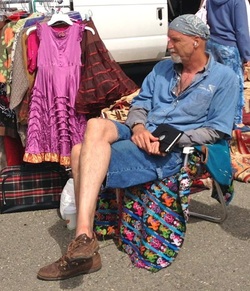 Finding one. There are more than a thousand permanent flea markets in the country, and countless more temporary venues, so chances are you can easily locate one with a simple Google search. Most are free, but the larger ones with higher quality goods may charge an entrance fee, typically $5 or $10; some charge extra for early admission, giving professional resellers a head start on the best bargains. Choosing one. Generally a flea market or swap meet involves dozens or hundreds of individual stands, many run by collectors who travel the circuit. A yard sale, garage sale, or estate sale is usually a single family selling off personal belongings; an estate sale implies (but doesn’t always deliver) higher quality goods. A rummage sale or white elephant sale is usually a fundraiser sponsored by a church or school. 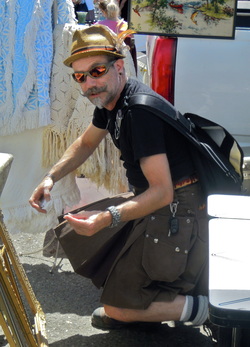 Dickering. It’s optional and not the elaborate haggling you may have done in, say, Istanbul. If the red cowboy boots you want are priced at $25, you can ask if they’ll take $15 or $20. They’ll say yes or no, and that’s pretty much it. Flea market pros know to the penny how much they want to make on each item; families running yard sales usually just want to move the stuff at any price. Buyer beware. This is a cash-only, no-guarantees, no-returns business. Check everything carefully before you buy. And of course, watch out for pickpockets. So why settle for the usual round of conventional tourist sites when you can enjoy an offbeat American icon? Whether your flea market souvenir is a piece of vintage jewelry, an antique baseball glove, an early edition of To Kill a Mockingbird, a Malibu Barbie lunchbox, or nothing at all, you’ll certainly take home priceless memories and a better understanding of America, in all its loony splendor. 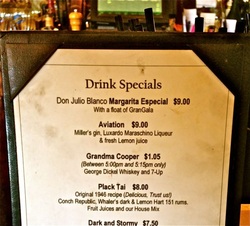 Spotted at the 1400 Bar & Grill, Alameda, CA Spotted at the 1400 Bar & Grill, Alameda, CA So I’m idly glancing at the drinks menu in a California pub when I notice a curious offering. “Grandma Cooper,” it says. “$1.05 (Between 5:00pm and 5:15pm only) George Dickel Whiskey and 7-Up.” Naturally I ask the bartender about it, and she explains that one of the bar’s owners had a grandmother who enjoyed a whiskey and 7-Up every afternoon at 5:00 – and lived to be 105. What a legacy: living more than a century and getting a highball named after her. My kind of old lady! Is whiskey the secret to a longer life? A 90-year-old neighbor once told me his: eating a stalk of celery every day. The folks at Dannon ran a great ad campaign back in the 1970s about people in Soviet Georgia who lived well into their second century on a diet rich in yogurt. But I have another theory. 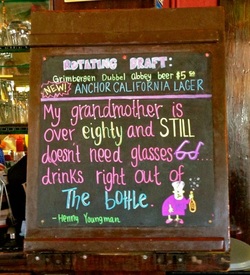 Also from the 1400 Bar & Grill Also from the 1400 Bar & Grill I once wrote a magazine article about a research project that divided frail, very elderly residents of a nursing home into two groups. The first remained decision-free, while the second group was given small responsibilities such as caring for a plant and choosing meal menus and movies. The second group stopped deteriorating and began to thrive; they shocked everyone by living significantly longer, better lives. I remember sitting back in my chair, gobsmacked, when I first read about this study. I mean, if just watering a fern and deciding between My Dinner with Andre and World War Z will give you a new lease on life when you’re 90, what does that suggest about the way we ought to be leading our lives now – and in the years ahead? This study is one of the many reasons Rich and I moved to Seville. Because when you live abroad, the first thing you give up is your ability to go on automatic pilot. Even the simplest daily activities require plenty of ingenuity and fortitude. 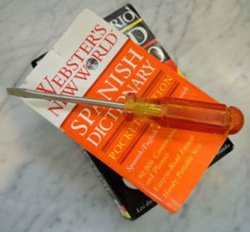 For instance, there was the time, early in our Seville days, when Rich wanted to make a small repair in our apartment. After a quick trip to the dictionary, we set out for the hardware store muttering “destornillador, destornillador, destornillador” (screwdriver, screwdriver, screwdriver) to ourselves. Unfortunately, when we arrived, my mind went blank and Rich blurted out a similar word, ordenador (computer), causing such mutual confusion that we were forced to abandon the attempt and flee the scene without buying either a screwdriver or a computer. At the time, we were frustrated and annoyed with ourselves, but after we got over our dudgeon, we had a good laugh, and we’ve been telling the story for years. Unlike those of our friends whose retirement goal is a life of untrammeled ease, I like facing up to the challenges of living abroad. It adds a lot of zest to the daily round. When a simple visit to the hardware store becomes a test of skill and wit, I know that even if I walk away without a screwdriver, at least I am acquiring the tools I need to keep my brain — and my sense of humor — ever more finely honed.  Maybe the real secret is just making sure you have a regular dose of fun in your life, something to look forward to every day. A few years ago I had the pleasure of meeting Rich’s Aunt Mary, a cheerful, chatty woman who had recently celebrated her 101st birthday. When I asked for the secret of her longevity, she raised the glass of whiskey she was holding and said, “I have one of these every day.” So now you know why I’ve decided to return soon – and often – to that California pub, arriving at 5:00 on the dot so I can say, “Make mine a Grandma Cooper. With a stick of celery and a yogurt chaser.” Cheers. 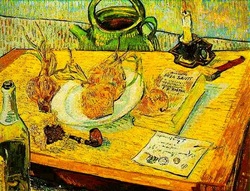 Van Gogh's drawing board, with snacks Van Gogh's drawing board, with snacks I pulled a lot of all-nighters back in my twenties, when I was working as a graphic designer specializing in meeting impossible deadlines for ridiculously low amounts of money. I remember explaining to a corporate friend that I survived the long hours at my drawing board by eating plenty of gorp, the homemade precursor of trail mix, a combo of raisins, nuts, chocolate chips, and (my personal touch) a light sprinkling of grated orange rind. “It’s great,” I said. “You don’t even have to stop working to eat it; you just pop a handful in your mouth, and it gives you all the energy you need to keep going for hours. What do you use?” “I take a different approach,” she said. “When I’m hungry, I eat. When I'm tired, I sleep.” I was stunned. You could do that? I tried to remember back before working on deadline, before college… 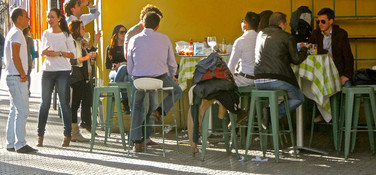 From that moment on, I vowed to organize my life so that someday I could eat and rest in a more civilized fashion. And now I do. I almost never pull all-nighters, I stop for meals when I’m hungry, and thanks to living in Spain, I take siestas every day. But I still like to keep convenient, high-energy foods on hand, especially when I travel. What’s the ideal road snack? A Google search revealed recipes for such homemade goodies as tofu jerky, beet chips, and protein-powder energy bars. They made me think of the popular Nepalese travel snack of dried yak cheese, a substance much harder, and less flavorful, than leather. On a long bus ride, I chewed a chunk of the stuff for more than an hour, and it was barely beginning to get soft by the time I surreptitiously threw it out the window. If I ever yield to curiosity and concoct my own tofu jerky, I suspect it will soon suffer a similar fate. To me, road food should be about pleasure as well as survival. Here’s what Rich and I favor when we’re on the move. 1. Thai or Mexican take-out is a welcome upgrade on any long-distance flight. Unless you’re on a strict budget, it’s worth the extra few bucks to enjoy something wonderful in place of the airline’s rubbery chicken. 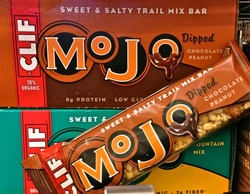 2. TUC crackers are possibly the best on the planet; they’re sold all over Europe, Asia, and Canada in a handy re-sealable package. Great on their own, they’re even better with cheese (preferably NOT pre-sliced, individually wrapped American cheese product). 3. Mojo Bars are a chewy blend of sweet and salty in various combinations of nuts, chocolate, pretzels, and coconut. For those tracking such things, they contain no cholesterol, trans fats, or processed sugar, are made from 70% organic ingredients, and are kosher. Just saying.  4. Gorp is still the best road snack ever. Homemade versions always taste better than packaged trail mix, and it’s worth the approximately one minute it’s going to take you to combine dried fruits (try cranberry, cherries, and/or ginger), nuts, and dark chocolate chips in a zip-lock baggie. If you have three more minutes to devote to the task, break up a high-quality dark chocolate candy bar to use in place of the chocolate chips. If you’re traveling in hot climates, use M&Ms to avoid melting, or (and I have personally tested this) wait until your melted gorp cools; it’ll harden into a handy candy bar. Being on the road, there are often times when I need to grab a bite on the fly or at odd hours to satisfy a stomach that hasn’t caught up yet with local schedules. But I can still enjoy foods that delight my taste buds and lift my spirits along with my blood sugar, and will keep me cheerful as well as functional until it’s time for a more civilized meal. Bon appétit! This post was written in response to questions I've been asked about preparing for long and varied trips. Unlike some of my better-organized and more practical blogger friends, I haven't obtained any free or discounted snack food, services, or gear in return for promoting anything on this blog. I'm just letting you know about stuff that Rich and I consider to be the most useful for our kind of travel.  One of the great things about growing up Catholic is that there’s a saint for every purpose. You apply to St. Anthony to find lost objects, ask St. Joseph for groceries when money is running low, and call on St. Agnes, St. Ursula, and St. Lucy to help you protect your virginity, should you desire to do so. There’s a specific heavenly advocate for every form of transportation, from driving a hearse to flying an airplane. So you can imagine how stunned I was this morning when I discovered that there is no patron saint of railway travel. Seriously? Then who the hell am I supposed to invoke to make sure this summer’s train trip gets back on track? Without appropriate heavenly representation, I turned to the next best thing – the Internet – and found the wisdom I had been seeking. A fellow named Francis, whom I’ve never actually met in that other realm we sometimes refer to as “real life,” shared this sage advice from his father in a comment on my Facebook page: “Never chase a missed train … get a pastry and wait for the next one.”  This is such perfect advice I can only assume Francis’s father is a zen master or one of the more advanced mystics. We all know it’s utterly useless to chase missed trains, boats that have sailed, and planes that have taken off without us or been cancelled altogether. Yet that seldom prevents us from running down the station platform, shouting curses at the retreating tail lights, only stopping when we realize that we’ve lost not only our transportation and our mental equilibrium, but the last shred of our dignity as well. Sinking our teeth into a warm, flaky pastry – or pursuing some other simple, pleasurable activity that enables us to be present to the moment – has a way of putting life back into proper perspective. 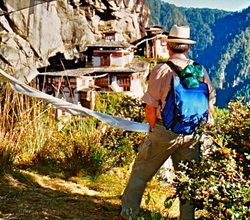 Rich, trekking in Bhutan Rich, trekking in Bhutan Is your life going to be better or worse because you missed that connection? You never know. Many years ago, when Rich and I were heading to the tiny Himalayan Buddhist kingdom of Bhutan, we discovered that our friends Blyth and Russ happened to be on the same flight. Their departing flight, scheduled for just one day after ours, was delayed by bad weather, and a Bhutanese acquaintance, knowing that Blyth and Russ have a small publishing company, offered to introduce them to the publisher of Bhutan’s main newspaper. They learned that he had received the king’s blessing to establish the first Internet connection between this isolated kingdom and the outside world, and our friends volunteered to return later in the year to provide him with a computer and the training to run it. Since then, Blyth and Russ have made more than a dozen trips to Bhutan, often bringing along groups of travelers, and their circle of friends widened until it included an introduction to the king himself. I’m not suggesting that every missed flight results in a royal connection; I’m just saying you never know. The Buddhists have an oft-told story about this. A farmer buys a splendid horse, and when all the neighbors praise his good fortune, he says, “You never know.” The horse breaks out of his corral and disappears, and the neighbors commiserate with the farmer about his loss. He says, “You never know.” The horse returns, accompanied by several mares. Rejoicing from the neighbors. The farmer says, “You never know.” The farmer’s son attempts to train the horse and breaks his leg. Condolences from the neighbors. “You never know,” says the farmer. The army sweeps through the area, conscripting all able-bodied men; the farmer’s son is left behind because of his broken leg. There’s more, but you get the idea. 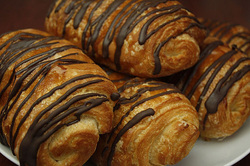 Unless you’re a highly evolved spiritual being like that farmer, you can’t count on keeping your cool every time your plans get turned upside down. A prayer to St. Expiditus, patron saint of urgent needs, may help. As for me, I’ll place my faith in the healing power of pastry. Amen. |
This blog is a promotion-free zone.
As my regular readers know, I never get free or discounted goods or services for mentioning anything on this blog (or anywhere else). I only write about things I find interesting and/or useful. I'm an American travel writer living in California and Seville, Spain. I travel the world seeking eccentric people, quirky places, and outrageously delicious food so I can have the fun of writing about them here.
My current project is OUT TO LUNCH IN SAN FRANCISCO. Don't miss out! SIGN UP HERE to be notified when I publish new posts. Planning a trip?
Use the search box below to find out about other places I've written about. Winner of the 2023 Firebird Book Award for Travel
#1 Amazon Bestseller in Tourist Destinations, Travel Tips, Gastronomy Essays, and Senior Travel
BLOG ARCHIVES
July 2024
CATEGORIES
All
|



